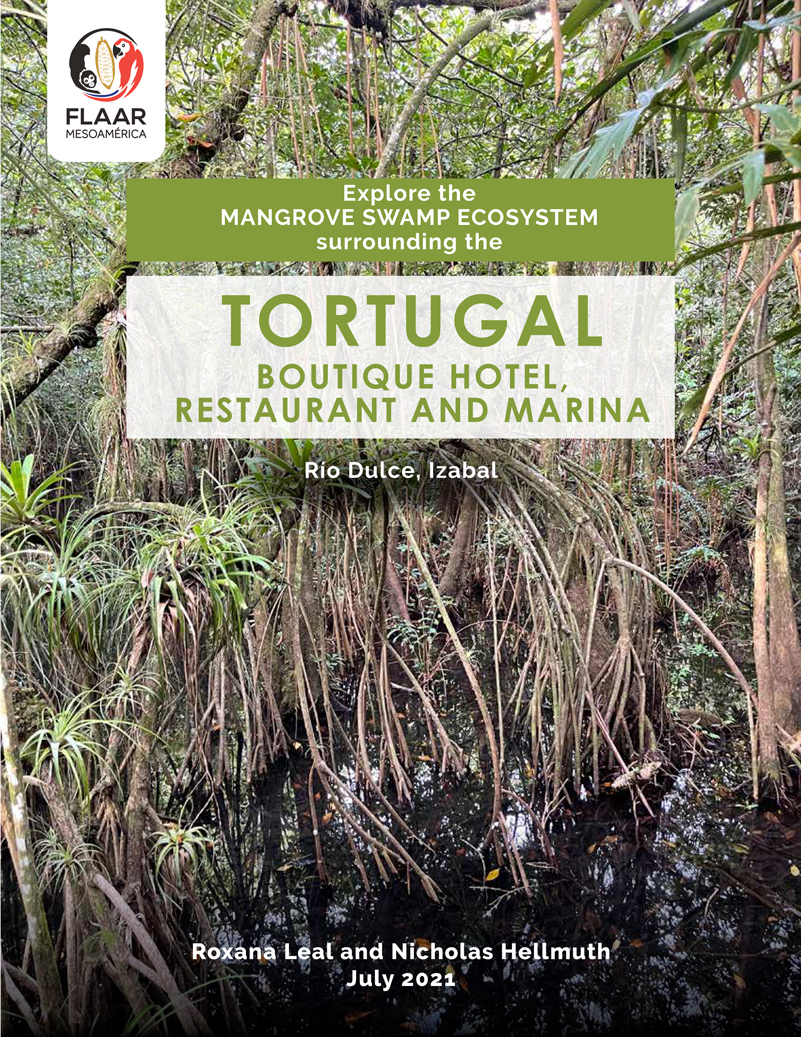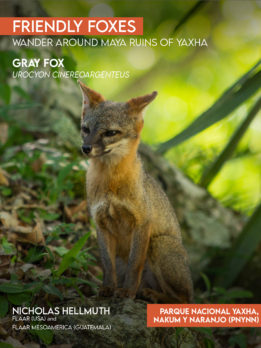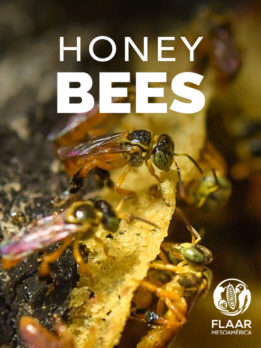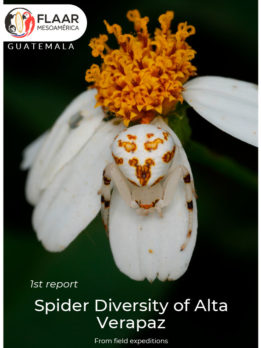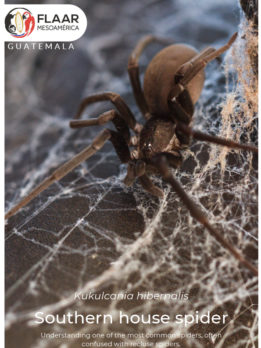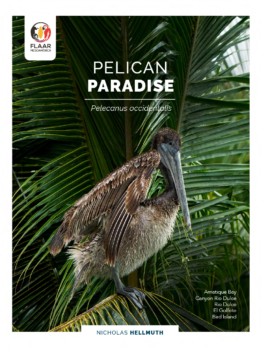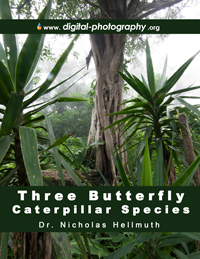The Bull Shark (Carcharhinus leucas) can reach a length between 260 – 350cm and a weight of 316.5 kg and its bite is considered the most powerful of any species of shark. It is cosmopolitan in all tropical and subtropical seas, visiting estuaries, ports, inlets, and penetrating freshwater streams. It is the only shark capable of tracing great distances in rivers -3700 Kilometers- from the sea and also, it can inhabit estuaries and fresh waters, such as rivers and lakes, as in, Lago Nicaragua, Nicaragua, and Lake Izabal, Guatemala. Although they seem not to be able to subsist for life and establish populations in those places. But, why can the bull shark adapt to fresh waters? Sulbarán (2017) mentions that “the kidneys, liver and rectal gland of bull sharks can gradually adjust to the salinity of the water in which they are found. When they move into freshwater, their kidneys remove less salt and more urea from the bloodstream through their urine, which is seen as the reverse of the osmoregulation commonly experienced by these animals.”
What is very interesting too is that many representations and remains of sharks have been found in Mesoamerican art and archaeology from the first millennium BC onwards; and even the Maya word xook (pronounced ‘shok’), has been proposed as the origin of the English term, as you can find in the research of Sarah Newman “Sharks in the jungle: real and imagined sea monsters of the Maya”.
You can continue learning more about this amazing shark with the bibliography we prepared for you.
References Cited and Suggested Reading on the Bull Shark, Carcharhinus leucas
- n.d.
- La ictiofauna del Refugio de Vida Silvestre Bocas del Polochic y la cuenca del lago de Izabal: composición, distribución y ecología. Organización de las Naciones Unidas para la Educación, La Ciencia y La Cultura. Universidad Del Valle de Guatemala.
Available Online:
https://docplayer.es/10739906-La-ictiofauna-del-refugio-de-vida-silvestre-bocas-del-polochic
-y-la-cuenca-del-lago-de-izabal-composicion-distribucion-y-ecologia.html#show_full_text
- 1995
- Plan de Manejo Regional para el Manatí Antillano, Trichechus manatus
- 1948
- Sharks. In: Fishes of the Western North Atlantic: Lancelets, Cyclostomes, Sharks. Part 1. The Yale Peabody Museum. 576 pages.
Sold Online:
www.amazon.com/Lancelets-Cyclostomes-Sharks-Western-Atlantic/dp/1933789115
- 1987
- Age and growth estimates of the bull shark, Carcharhinus leucas, from the northern Gulf of Mexico. Environmental Biology of Fishes volume 20, pages169–181.
Available Online:
www.researchgate.net/publication/241748038_Age_and_Growth_of_the_Bull_Shark
_Carcharhinus_leucas_from_Southern_Gulf_of_Mexico
- 1971
- The Life of Sharks. Weidenfeld and Nicolson, London. pp 136-145.
Includes an excellent chapter on the world-wide distribution freshwater sharks, including the Bull Shark.
Sold Online:
www.amazon.com/Life-Sharks-Paul-Budker/dp/0231083149
- 1979
- The Fresh-Water Shark in Nicaragua. Natl. Geogr. Soc. Res. Rep., 1970 Proj.: 53-63.
- 2004
- Age and Growth of the Bull Shark, Carcharhinus leucas, from Southern Gulf of Mexico. J. Northw. Atl. Fish. Sci., Vol. 35: 367–374.
Downloadable Online:
https://pdfs.semanticscholar.org/4a8b/d273be7c7639a45ed740737bf41066c494c8.pdf
- 2009
- Áreas de crianza de tiburones en la plataforma continental del Pacífico de Guatemala: Herramienta para el manejo y aprovechamiento sostenido del recurso tiburón. Proyecto FONDECYT. 68 pages.
Available Online:
http://glifos.concyt.gob.gt/digital/fodecyt/fodecyt%202006.13.pdf
- 2014
- Utilidad de la biodiversidad como indicador de sostenibilidad para la evaluación de la calidad ambiental de la Costa Este del Pacífico de Guatemala. Universidad San Carlos de Guatemala. Programa Universitario de Investigación. Recursos Naturales y Medio Ambiente. 169 pages.
Available Online:
https://digi.usac.edu.gt/bvirtual/informes/puirna/INF-2013-20.pdf
Page 118 mentions the groups of sharks in the Pacific East Cost in Guatemala.
- 2013
- Tiburones, rayas y quimeras de México. CONABIO. Biodiversitas, 111:1-6
Available Online:
www.biodiversidad.gob.mx/Biodiversitas/Articulos/biodiv111art1.pdf
Very helpful. Photographs are large enough to be useable. But shows only a fraction of the sharks; surely there are more that are pictured.
- 2013
- An Inventory of the Geographical Distribution and Conservation Status of Marine Turtles and Sharks in the Wider Caribbean and Relationship to Fisheries. Commissioned by WWF-MAR. 173 pages.
Available Online:
www.dcbd.nl/sites/www.dcbd.nl/files/documents/Doyle%202013%20Caribbean%20Turtle
%20and%20Shark%20Inventory.pdf
- 2003
- Plan Maestro refugio de vida silvestre Bocas del Polochic II Plan Maestro 2003-2007. Guatemala. Guatemala. 101 pages.
Available Online:
https://es.scribd.com/document/238569314/Plan-Maestro-Bocas-Del-Polochi
The bull shark appears (Carcharhinus leucas) on page 18
- 1938
- Notes on Invasion of Fresh Water by Fishes of the Gulf of Mexico, with Special Reference to the Mississippi-Atchafalya River System. Copeia, 1938(2): 69-72.
Available Online:
https://www.jstor.org/stable/1435693?seq=1
- 1987e
- The Surface of the Underwaterworld Iconography of the Gods of Early Classic Maya art in Peten, Guatemala. revised English original of PhD. Dissertation (submitted and accepted 1986). Vol. 1, 306 pages (text). Vol. 2, 255 pages (about 199 pages of line drawings, more than half done specifically for this PhD dissertation).
I call this “e” because it is English. I call the other edition “d” for Deutsch. I sincerely appreciate Suzanna Reisinger, my helpful trilingual and multi-cultural Swiss-Austrian (Liechtenstein) girlfriend for translating the zillion pages of my dissertation into German.
- 1987d
- Monster und Menschen in der Maya-Kunst. 2000 Jahre Kultur aus dem tropischen Urwald. ADEVA, Akademische Druck u. Verlagsanstalt, Graz, Austria. 403 pages 727 illustrations.
This is the coffee table book edition of the PhD dissertation a year earlier at Karl-Franzens Universitaet, Graz, Austria.
- 1985
- The Xoc, the Shark, and the Sea Dogs: An Historical Encounter. In Fifth Palenque Round Table, 1983, Vol. VII, ed. Virginia M. Fields, pp.
His bibliography is impressive. Either he has a gigantic personal research library or his university has a comfortable reading room in it’s libraries.
At least one other scholar (Newman 2016) has found the use of the word shark in the English language before the British sailors reached Mesoamerica. But linguistic research on the word Xoc in Mayan languages is essential irrespective of whether it is the origin of the English word shark. The Spanish word is tiburon, so not suggested to be from local Mayan languages.
Free download:
www.mesoweb.com/pari/publications/RT07/Xoc.pdf
- 1991
- Jaws II: Return of the Xoc. 6th Palenque Round Table, 1986.
Tom Jones has written many additional articles on the Xoc glyph in Maya hieroglyphic writing. His 1985 opus has the most material, but if you are an epigrapher you can find lots more if you Google Tom Jones, Xoc hieroglyph. The present bibliography is on the Bull Shark in rivers and lakes, inland from the Caribbean Sea.
- 1961
- Provisional Audiogram for the Shark, Carcharhinus leucas. Science, 133: 1480-1482.
- 2016
- Caracterización de la pesquería de tiburón en el norte de Quintana Roo, México. Ciencia Pesquera, número especial 24: 153-156.
Available Online:
www.researchgate.net/profile/Stuart-Fulton/publication/323128599_Caracterizacion_de_la_pesqueria_de_tiburon_en_el_norte
_de_Quintana_Roo_Mexico/links/5a81d40baca272d65019a30b/Caracterizacion-de-la
-pesqueria-de-tiburon-en-el-norte-de-Quintana-Roo-Mexico.pdf
- 2016
- Sharks in the jungle: real and imagined sea monsters of the Maya. Antiquity 90 354 (2016): 1522–1536.
Newman may be one of the first individuals to point out that the word shark was already used in the English language in 1442.
Available Online:
www.academia.edu/30084315/Sharks_in_the_jungle_real_and_imagined
_sea_monsters_of_the_Maya
- 2004
- Acuario y Centro de Investigaciones Marinas en Livingston, Izabal.
- 2019
- Crocodiles, sharks, and some speculations on central Petén Preclassic history. Ancient Mesoamerica, 18 pages.
Remarkable concept of an entire Maya city layout being patterned after a crocodile. The drawing of the crocodile by Don Rice (Figure 2) is one of the best I have seen. I estimate it’s a digital rendering?
Available Online:
www.researchgate.net/publication/336437980_CROCODILES_SHARKS_AND_SOME
_SPECULATIONS_ON_CENTRAL_PETEN_PRECLASSIC_HISTORY
- n.d.
- Estudio sobre la Pesquería del Tiburón en Guatemala. Unidad Especial de Ejecución para la Pesca y la Acuicultura.
Available Online:
www.fao.org/3/X2097E08.htm
- 1984
- Food Habits, Occurrence, and Population Structure of the Bull Shark, Carcharhinus Leucas, in Florida Coastal Lagoons. Bulletin of Marine Science, Volume 34, Number 1, pp. 71-80(10).
Available Online:
www.ingentaconnect.com/content/umrsmas/bullmar/1984/00000034/00000001/art00004
- 1998
- The bull shark, Carcharhinus leucus (Valenciennes, 1841), from The Usumacinta River Tabasco, Mexico, with notes on its serum composition and osmolarity. Ciencias Marinas (1998) 24(2): 183-192.
El tiburón chato, Carcharhinus leucus (valenciennes, 1841), del río Usumacinta, Tabasco, México, con notas sobre la composición de su suero sanguíneo y osmolaridad.
English in one column. Spanish in the other column.
Available Online:
www.researchgate.net/publication/277149184_The_Bull_Shark_Carcharhinus_leucas
_Valenciennes_1841_From_The_Usumacinta_River_Tabasco_Mexico_With_Notes
_On_Its_Serum_Composition_And_Osmolarity
- 1977
- The Bull Shark, Carcharhinus leucas, from the Upper Mississippi River Near Alton, Illinois. Copeia, 1977(1): 166-168.
- 1966
- Sharks and sawfish in the Lake Izabal-Rio Dulce System. Guatemala. Copeia Vol. 1966, No. 3, pages 620-622.
Available Online:
www.jstor.org/stable/1441111?seq=1
- 1971
- Movement of Bull Sharks, Carcharhinus leucas, between Caribbean Sea and Lake Nicaragua Demonstrated by Tagging. Copeia, Vol. 1971, No. 2, pp. 336-338
Available Online:
www.jstor.org/stable/1442846?seq=1
- 1976
- Investigations of the Ichthyofauna of Nicaraguan Lakes. University of Nebraska, Lincoln. 663 pp.
- 1982
- Age, Growth and longevity of Carcharhinus leucas Estimated from Tagging and Vertebral Rings. Copeia, 1982(1): 110-116.
Available Online:
www.jstor.org/stable/1444275?seq=1
Helpful web sites for any and all creatures of the Caribbean
There are several web sites that are helpful even though not of a university or botanical garden or government institute.
However most popular web sites are copy-and-paste (a polite way of saying that their authors do not work out in the field). Many of these web sites are click bait (they make money when you buy stuff in the advertisements that are all along the sides and in wide banners also. So we prefer to focus on web sites that have reliable information.
www.bbc.com/mundo/noticias-40565167
El tiburón toro, la extraordinaria especie capaz de habitar en aguas dulces y saladas (y está en América), Patricia Sulbarán Lovera, BBC Mundo, 2017.
Web sites specifically on the Bull Shark, Carcharhinus leucas
www.bbc.com/mundo/noticias-40565167
This article talks about the capacity to habit in fresh water and saltwater
https://biogeodb.stri.si.edu/sftep/es/thefishes/species/95
Information and distribution map
https://climapesca.org/2018/09/06/carcharhinus-leucas/
Description, common names, distribution and general information
www.iucnredlist.org/species/39372/10187195
Conservation status
www.naturalista.mx/taxa/84996-Carcharhinus-leucas
Photos and map distribution
First posted, August 2021.
Bibliography and article prepared by Vivian Hurtado, FLAAR Mesoamerica.

















